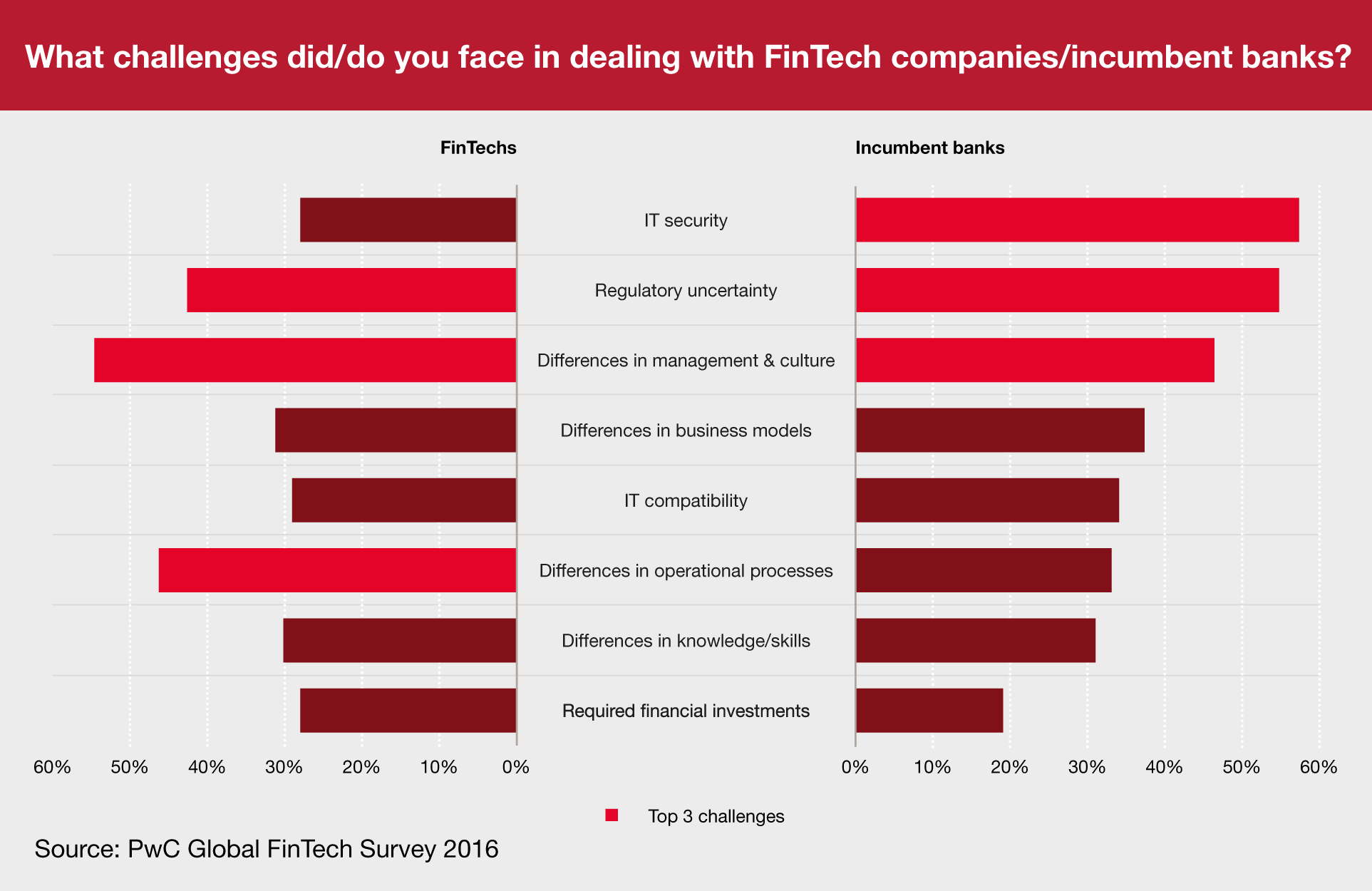Customers in the spotlight: How FinTech is reshaping banking
Consumer banking braces for disruption
The very simplicity that underlies banking products and processes for savings, lending, and business services renders the sector ripe for disruption. The majority of financial sector executives (73%) perceive consumer banking as the one most likely to be disrupted by FinTech.
New entrants see opportunity in disaggregating the components of traditional banking and offering targeted solutions with better servicing to both retail consumers and businesses. In parallel, the threats posed by FinTechs have the ability to disrupt four categories of incumbents’ business – market share, margins, information security/privacy and customer churn – at higher rates when compared to other financial sectors.


Reinvented customer service
Traditional players are still in the early stages of customer-oriented solutions, at least when compared to what FinTechs propose. Only half of the respondents from the banking sector (53%) believe they are consumer-centric, compared with over 80% for FinTech survey participants.
By prioritising 24/7 access, FinTechs offer services available via non-traditional channels such as social media, empowering customers to a great extent. By 2020, social media will be the primary medium to connect, engage, inform and understand customers (from the mass ‘social mind’ to the minutiae of each and every individual), as well as the place where customers research and compare banks’ offerings.
Over the next five years, channel diversification will be a key driver in the banking sector:
- Over 90% of banks expect growth in the usage of mobile applications, much higher than any other financial sector.
- A fast-paced user increase is also expected in usage ofwebsite and/or web-based platforms (82%).
- Traditional providers are increasingly taking a ‘mobile-first’ approach to reach out to consumers, e.g. designing their products and services with the aim of enhancing customer engagement via mobile.
- More than half (52%) of the respondents in our survey offer a mobile application to their clients, and 18% are currently developing one.
Smart solutions
By observing and often experiencing first-hand what banks offer – or do not offer – new entrants are targeting segments that need to most urgently focus on the customer. By developing narrowly defined, but highly effective solutions they have managed to step into and take over segments neglected by traditional banks in terms of offerings. In particular, FinTechs are offering:
- Solutions for customers unable to get loans with no or poor credit scores
- Peer-to-peer (P2P) marketplaces for customers unable to secure loans from the traditional sources
- Personal finance management tools

The threat of FinTech is the impact it will have on customer expectations towards banking services
Reaching out to business clients
B2B solutions get at the heart of what often ails legacy financial institutions, antiquated technology that is cumbersome to maneuver. Banks are increasingly utilising open development and Software-as-a-Service (SaaS) solutions offered by FinTech start-ups in an effort to easily integrate and streamline operational capabilities and move toward digital/mobile delivery. The incorporation of application program interfaces (APIs) enables third parties to develop value-added solutions and features that can easily be integrated with bank platforms.
Paving the way for a win-win partnership
Competition between banks and new entrants may give way to direct collaboration across the Fintech ecosystem.
In such case, both parties should profit. Potential opportunities span from product design and development by the start-ups to distribution and infrastructure capabilities by banks. However, several major impediments inhibit business relations between banks and FinTechs. From the banks’ perspective, FinTechs lack the proper IT security and regulatory certainty, while FinTechs believe banks can be hard to work with due to differences in management and culture as well as differences in operational processes.


















